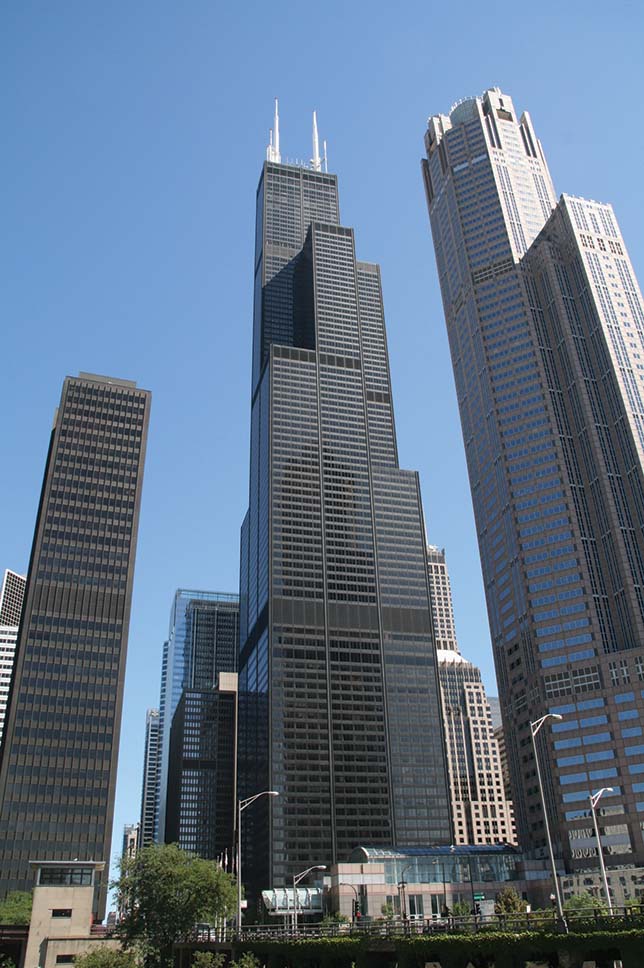Rising Up: New Program Takes Multidisciplinary Approach to the Creation of Skyscrapers
The College of Architecture is pleased to announce an exciting new degree program, the Master of Tall Buildings and Vertical Urbanism (M.TBVU). The program—the first-of-its-kind, multidisciplinary advanced degree focused specifically on the creation of skyscrapers—brings together experts from architecture, engineering, real estate, development, and other fields involved with the creation of tall and supertall structures. It is also supported by the nonprofit Council on Tall Buildings and Urban Habitat (CTBUH), the world’s leading authority on tall buildings.

The development of tall buildings offers far more than bragging rights for the cities where they’re built or for the firms that design them—they’re crucial for accommodating the accelerating growth of cities. The United Nations estimates that every week between now and 2050, more than 1 million people across the globe will move to an urban area.
“That means we as a species on this planet need to build the equivalent of Chicago every month,” says Antony Wood, director of the M.TBVU program and CTBUH president. “Tall buildings are an important part of the solution. But to ensure cities are places where people can thrive, we must do more than simply increase density. We need to integrate tall buildings more thoughtfully into both our urban and social fabrics.”
“Supertall buildings allow us to maximize the opportunities of a smaller footprint,” he adds. “Urban sprawl uses so much land—land that we won’t have decades down the road—and it also takes so much energy to create and operate a horizontal city.”
In addition to the partnership with CTBUH, the program will be guided by an Advisory and Teaching Panel. The panel comprises some of the world’s leading experts on tall building design, engineering, and development, including, among others: Skidmore, Owings & Merrill Consulting Partner William Baker, the structural engineer behind the Burj Khalifa, the world’s tallest building; Jeanne Gang, the architect of two of Chicago’s most noteworthy new skyscrapers, St. Regis Chicago and Aqua Tower; Gregg Pasquarelli, co-founder of SHoP Architects, designers of the world’s thinnest supertall building, 111 West 57th Street in New York; and Moshe Safdie, designer of Marina Bay Sands in Singapore and Montreal’s renowned Habitat ’67.
Though the program will focus on rigorous research and coursework in S. R. Crown Hall, it also will offer opportunities for students to exercise their skills beyond the Mies Campus. This will include traveling studios, international design competitions, research funding, conferences, and exclusive internships with some of the world’s leading firms.

“There’s more to this program than coursework: we’re inviting students to make connections with the industry,” says Wood. “Because of the CTBUH network, because of these collaborations with these companies, and because of IIT’s global reputation, I believe our students will be looking at great employment opportunities with some of the top companies in the world.”
The creation of the M.TBVU program bolsters Illinois Institute of Technology’s long history of innovation in skyscraper design and engineering. During Ludwig Mies van der Rohe’s years as director of the architecture program, steel-and-glass high-rises were a burgeoning area of study. Later, educational pioneers Myron Goldsmith, Fazlur Khan, David Sharpe, and Mahjoub Elnimeiri made tall buildings a primary topic of research at the College of Architecture. The structural and design research that they and their students conducted at Illinois Tech made some of Chicago’s most significant high rises—Sears (now Willis) Tower, the John Hancock Center (now 875 North Michigan Avenue), One Magnificent Mile, and Onterie Center—possible. Since then, Illinois Tech alumni and faculty have played critical roles in creating cutting-edge skyscrapers around the world
“There is no school of architecture with a stronger pedigree in tall buildings than Illinois Institute of Technology,” says Rowe Family College of Architecture Dean Endowed Chair Reed Kroloff. “After all, skyscrapers were invented in Chicago, just blocks from our campus. Many structural, formal, and organizational innovations in tall building design began as projects here at IIT, and we expect that tradition to continue, and accelerate, with this program. The M.TBVU—the only degree of its kind anywhere—extends the college’s legacy, and Chicago’s too”